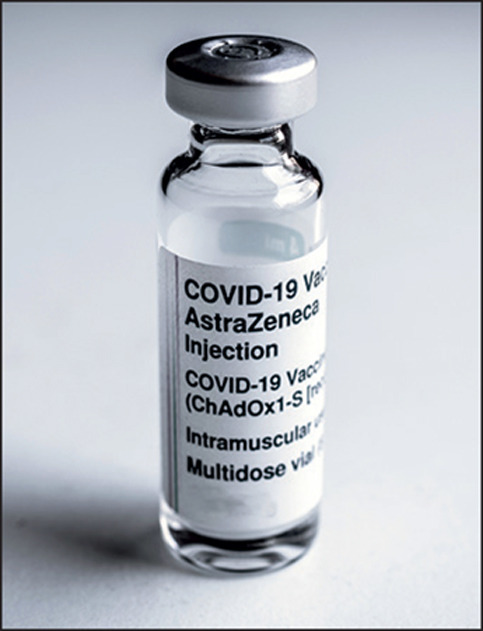Safety considerations associated with the Oxford–AstraZeneca COVID-19 ChAdOx1-S vaccine (AZD1222) have led many public health agencies to recommend a heterologous boost with an mRNA vaccine after prime vaccination with ChAdOx1-S instead of a homologous boost. The first results of a phase 2 trial from Spain1 and additional reports from observational studies suggest robust immune responses accompanied by acceptable reactogenicity after ChAdOx1-S prime and BNT162b22, 3 (Pfizer–BioNTech) or mRNA-12734 (Moderna)boost vaccination. Given the strong immune response after heterologous prime-boost vaccination, mixing of vaccines has been suggested as a suitable strategy to contain emerging SARS-CoV-2 variants.5
Heterologous boosting with BNT162b2 has been shown to induce higher counts of spike-specific CD4+ and CD8+ T cells and, in particular, high titres of neutralising antibodies in a surrogate test against the SARS-CoV-2 variants of concern (VOCs) alpha, beta, and gamma.3 However, the rapid spread of the delta variant is a concern for both ChAdOx1-S-primed vaccinees who are expecting a boost vaccination and for individuals who have been fully vaccinated with ChAdOx1-S.
We analysed plasma from ChAdOx1-S-primed vaccinees at a mean 16·3 days (range 14–22 days) after homologous ChAdOx1-S (group 1; n=12, seven women) or heterologous BNT162b2 (group 2; n=11, eight women) boost3 to compare neutralising activity against SARS-CoV-2 VOCs, including the delta variant. Detailed methodology is available in the appendix. The mean dose interval between prime and boost was 73·5 days (range 71–85 days) and did not differ between the groups (appendix p 1). We used a vesicular stomatitis virus-based pseudotyped virus assay to analyse neutralisation.6 This study was approved by the Internal Review Board of Hannover Medical School. All participants gave written informed consent.
Mean anti-spike IgG (QuantiVac, Euroimmun, Lübeck, Germany) was 171·9 relative units (RU) per mL (SD 121·8 RU/mL) in group 1 and 611·0 RU/mL (SD 104·5 RU/mL) in group 2 (p<0·0001; appendix p 1). Plasma from individuals in group 1 had moderate 50% neutralisation titre (NT50) against the wild type and alpha variant, and this activity was further diminished against beta, gamma, and delta variants (appendix p 2). In contrast, all heterologous ChAdOx1-S/BNT162b2 vaccinated individuals achieved at least NT50=25 against all variants, including the delta variant (NT50≥100 in 85% of vaccinees; appendix p 2). Mean anti-spike IgG correlated highly significantly to NT50 against the delta variant across both groups (r=0·901; p<0·0001, Pearson correlation; appendix p 3).
The statistical analysis in this small study does not account for potential confounding factors. However, the robust inhibition of variants including the delta variant further supports heterologous ChAdOx1-S/BNT162b2 vaccination. If confirmed in a large study, our data also support a heterologous boost vaccination of individuals with completed homologous ChAdOx1-S vaccination, once humoral immunity is declining and patients become susceptible to infection.

© 2021 Ian Gowland/Science Photo Library
We declare no competing interests. The work presented in this Correspondence was supported by the German Center for Infection Research and the Federal Ministry of Education and Research, the Ministry for Science and Culture of Lower Saxony, and the German Research Foundation. The funders had no role in study design, data collection, data analysis, interpretation, writing, or submission of the Correspondence. Further details about contributors and acknowledgements are available in the appendix.
Supplementary Material
References
- 1.Borobia AM, Carcas AJ, Pérez-Olmeda M, et al. Immunogenicity and reactogenicity of BNT162b2 booster in ChAdOx1-S-primed participants (CombiVacS): a multicentre, open-label, randomised, controlled, phase 2 trial. Lancet. 2021;398:121–130. doi: 10.1016/S0140-6736(21)01420-3. [DOI] [PMC free article] [PubMed] [Google Scholar]
- 2.Hillus D, Schwarz T, Tober-Lau P, et al. Safety, reactogenicity, and immunogenicity of homologous and heterologous prime-boost immunisation with ChAdOx1-nCoV19 and BNT162b2: a prospective cohort study. medRxiv. 2021 doi: 10.1101/2021.05.19.21257334. published online June 2. (preprint). [DOI] [PMC free article] [PubMed] [Google Scholar]
- 3.Barros-Martins J, Hammerschmidt SI, Cossmann A, et al. Immune responses against SARS-CoV-2 variants after heterologous and homologous ChAdOx1 nCoV-19/BNT162b2 vaccination. Nat Med. 2021 doi: 10.1038/s41591-021-01449-9. published online July 14. [DOI] [PMC free article] [PubMed] [Google Scholar]
- 4.Normark J, Vikström L, Gwon Y-D, et al. Heterologous ChAdOx1 nCoV-19 and mRNA-1273 vaccination. N Engl J Med. 2021 doi: 10.1056/NEJMc2110716. published online July 14. [DOI] [PMC free article] [PubMed] [Google Scholar]
- 5.Duarte-Salles T, Prieto-Alhambra D. Heterologous vaccine regimens against COVID-19. Lancet. 2021;398:94–95. doi: 10.1016/S0140-6736(21)01442-2. [DOI] [PMC free article] [PubMed] [Google Scholar]
- 6.Arora P, Kempf A, Nehlmeier I, et al. Increased lung cell entry of B.1.617.2 and evasion of antibodies induced by infection and BNT162b2 vaccination. bioRxiv. 2021 doi: 10.1101/2021.06.23.449568. published online June 23. (preprint). [DOI] [PMC free article] [PubMed] [Google Scholar]
Associated Data
This section collects any data citations, data availability statements, or supplementary materials included in this article.


